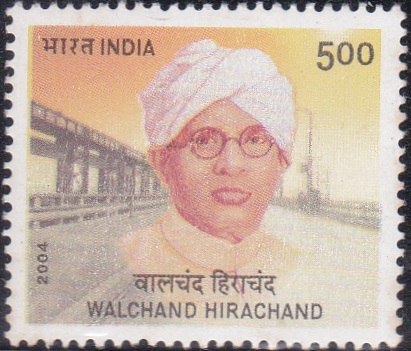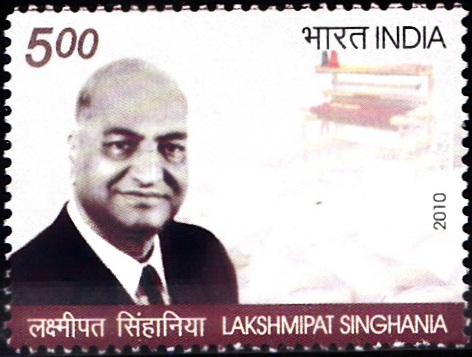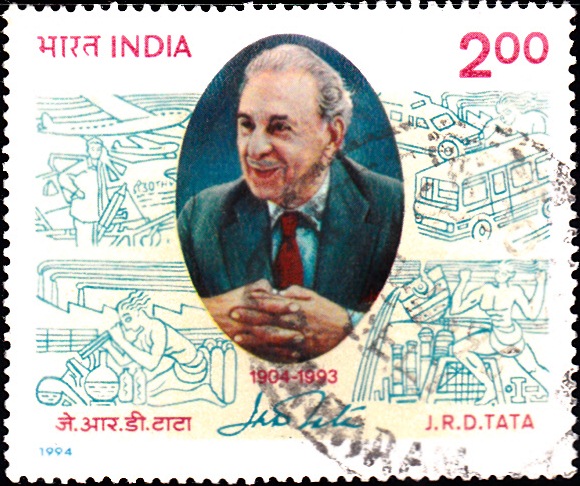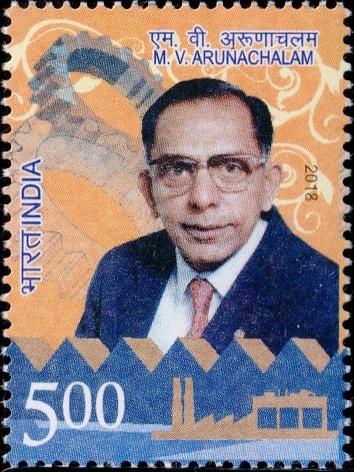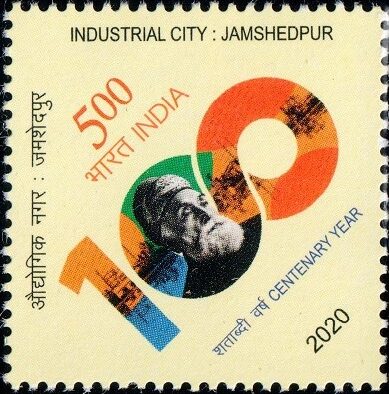
Industrial City : Jamshedpur
A commemorative postage stamp on the Centenary of the Industrial City : Jamshedpur :
 Issued by India
Issued by India
Issued on Feb 17, 2020
Issued for : Department of Posts is pleased to issue a Commemorative Postage Stamps on the Industrial City : Jamshedpur to mark its centenary.
Credits :
Stamp/FDC/Brochure/Cancellation Cachet : Smt. Alka Sharma
Type : Stamp, Mint Condition
Colour : Multi Colour
Denomination : 500 Paise
Stamps Printed : 644000
Printing Process : Wet Offset
Printer : Security Printing Press, Hyderabad
About :
- When Lord Chelmsford renamed the small village called Sakchi in 1919, little did he realise that he was creating an exemplary world-class city that even today sets the pace for sustainable urban development. Jamshedpur completes 100 years since its renaming and it continues to be recognised as the place where India’s first steel plant was set up. The founder, Jamsetji Nusserwanji Tata, dreamt of an industrialised and prosperous India. Five years before the site of the steel plant was finally located, he wrote to his son Dorab of what his dream city should look like. This is what he envisioned:
- Be sure to lay wide streets planted with shady trees, every other of a quick-growing variety. Be sure that there is plenty of space for lawns and gardens. Reserve large areas for football, hockey and parks. Earmark areas for Hindu temples, Mohammedan mosques and Christian churches. – Jamsetji Nusserwanji Tata.
- Spread over 64 sq km, the city lies on the southern edge of Jharkhand in the Chhota Nagpur plateau region, bordered by Odisha and West Bengal. It is surrounded by abundant green forests of the Dalma Hills. Sparkling with diversity, the city is home to festivals and landmarks of many faiths that coexist.
- Today, Jamshedpur is considered a modern and futuristic city with a high quality of life. This finds resonance in the voices of its citizens according to a survey by AC Nielsen. The survey claimed that the overall satisfaction score among the citizens of Jamshedpur is higher than the global norm and the norm for the Utility Sector in the Asia Pacific region. Its state-of-the-art Information and Communication Technology (ICT) infrastructure enhancing communication and connectivity is an aid to constantly bettering the quality of life of its citizens.
- The plant has expanded its product range and improved quality to reach a production capacity of 10 million tonnes today. The growth of the steel plant has spurred the growth of ancillary and service industries, transportation and logistics. While the steel plant still dominates the city’s skyline, several transnational corporations have offices and manufacturing units in Jamshedpur.
- From the time of driving in the first stake, the Iron and Steel company assumed the functions of a city administrator. Sir Dorabji Tata (chairman in 1904-1932) and the directors collaborated to execute their envisioned blueprint. Within 10 years they had spent nearly 25 lakh rupees, the absence of a mayor or a corporation notwithstanding.
- The steady growth of industries and the city brought prosperity and development but sustainability was at the heart of all value creation. The greening of Jamshedpur is intrinsic to its planning, to preserve the environment, maintain ecological balance and reduce the carbon footprint. Among its many achievements is being among the forerunners in the country to lay plastic roads with recycled waste, implement waste segregation and to achieve zero effluence discharge.
- With an estimated one-third of the city area under green cover, Jamshedpur is a truly Green City, ringed by lush vegetation. The city has a variety of trees that line the roads, numerous parks, playgrounds and gardens. Jubilee Park in the centre of the city was inaugurated and dedicated to the people of the city by the then Prime Minister Jawaharlal Nehru to commemorate the Golden Jubilee of Tata Steel. Sir Dorabji Tata Park is another landmark with its beautiful landscaping, exotic flowers and tastefully-lit fountains. The Zoological Park, housing lions of African origin – the first Indian zoo to do so – adds to the green cover and biological diversity. There are several water bodies in and around the city, including the ones at Beldih Triangle, Jubilee Park and the man-made lake at Dimna. It was felt in the late 1930s that scarcity of water was a probability and that is why the “Dimna Nala Water Supply Scheme” was initiated to set up the lake. The construction began in February, 1940 and water supply started in four years.
- Jamshedpur has the distinction of a high literacy rate of 85.4 percent and is home to around 200 schools, colleges, professional and technical institutions and institutes of excellence, fostering learning from an early age. The city offers its young the best infrastructure and world-class training centres in many fields of sports that nurtures talent, often from the grassroots, many of whom have earned laurels at the national and international levels. Academics offer training in athletics, football, hockey and archery while adventure sports find a special place at the Tata Steel Adventure Foundation started by the first Indian woman Everester, Ms Bachendri Pal.
- Text : Based on information received from the proponent.
Subscribe
Login
0 Comments



